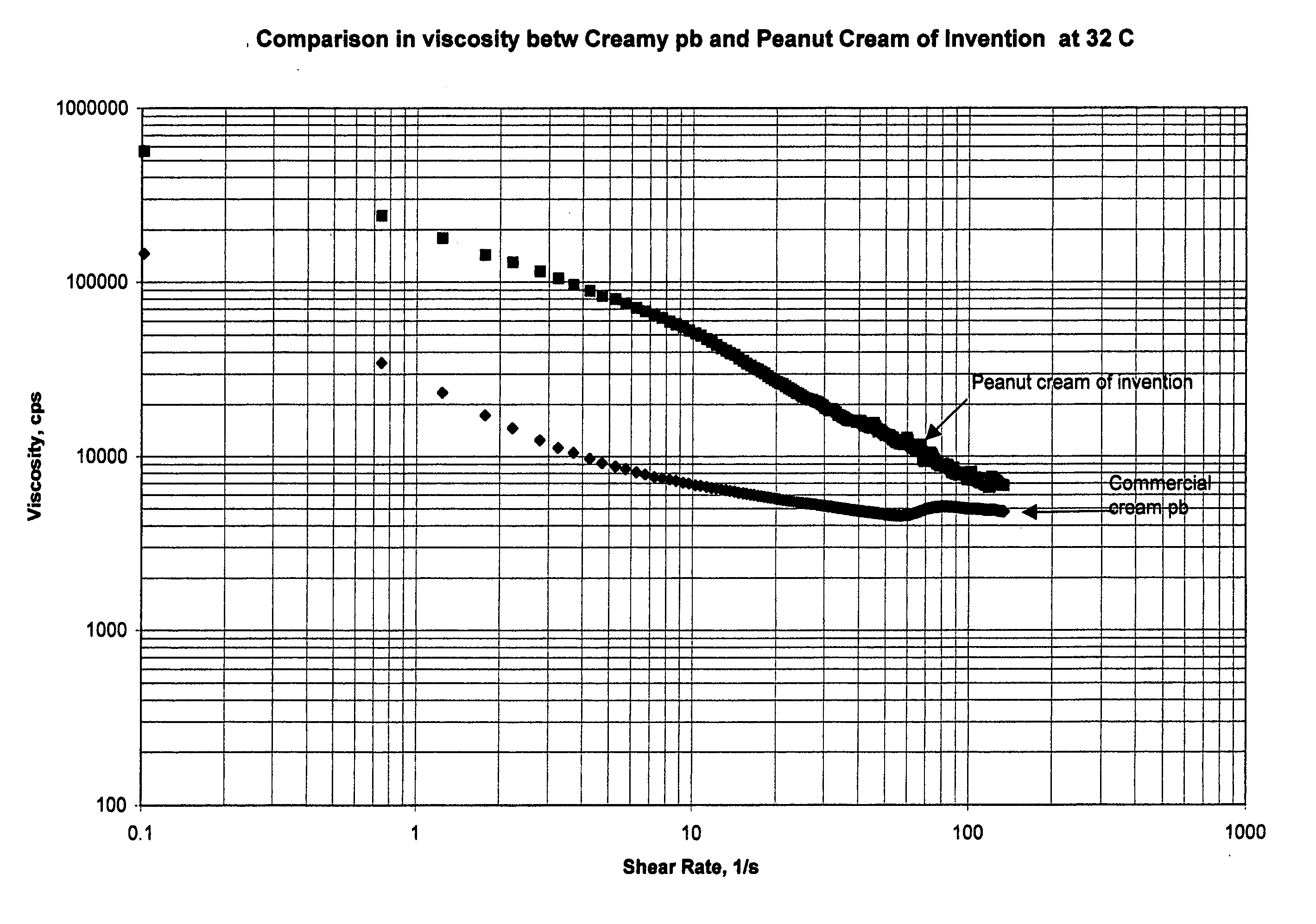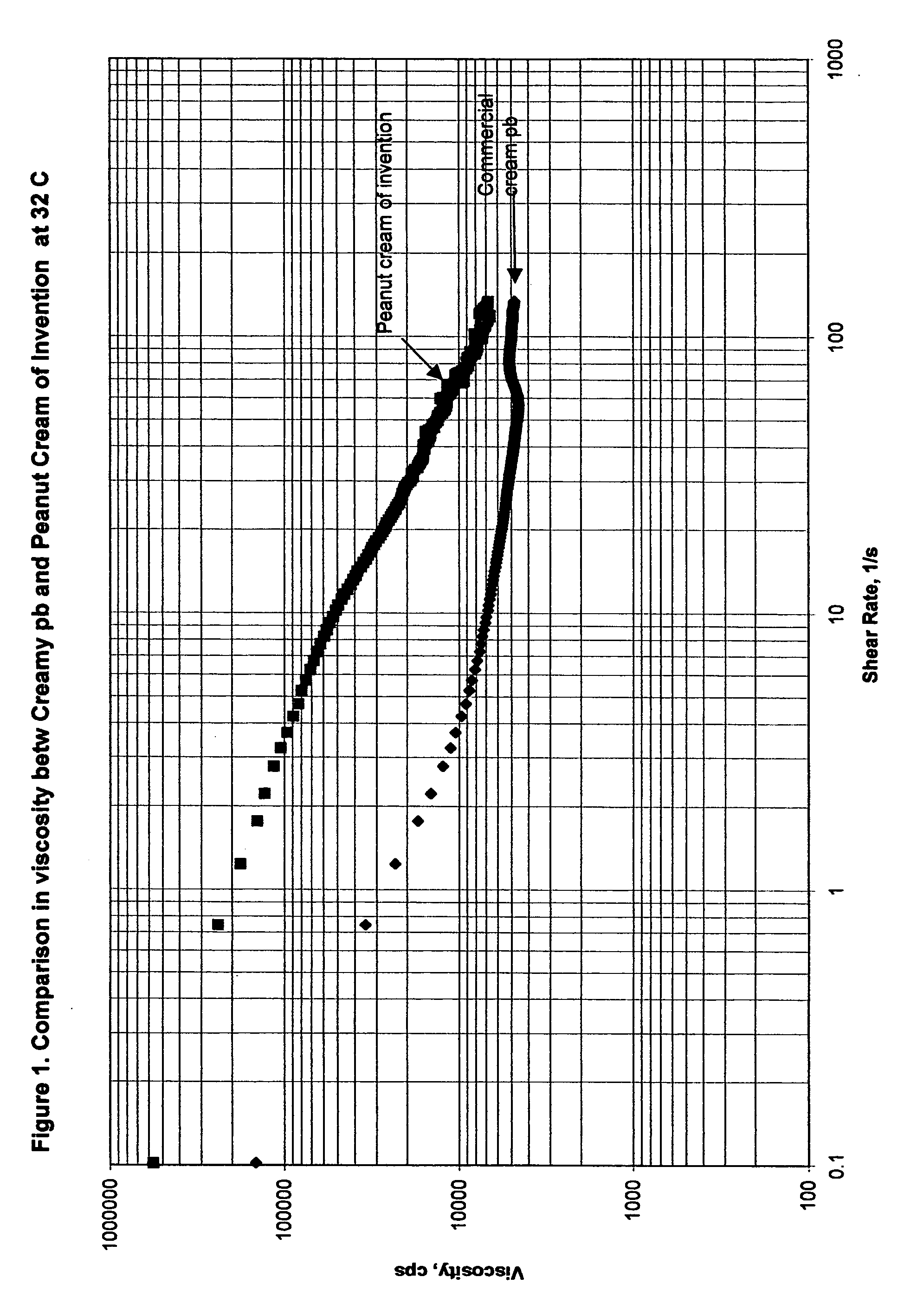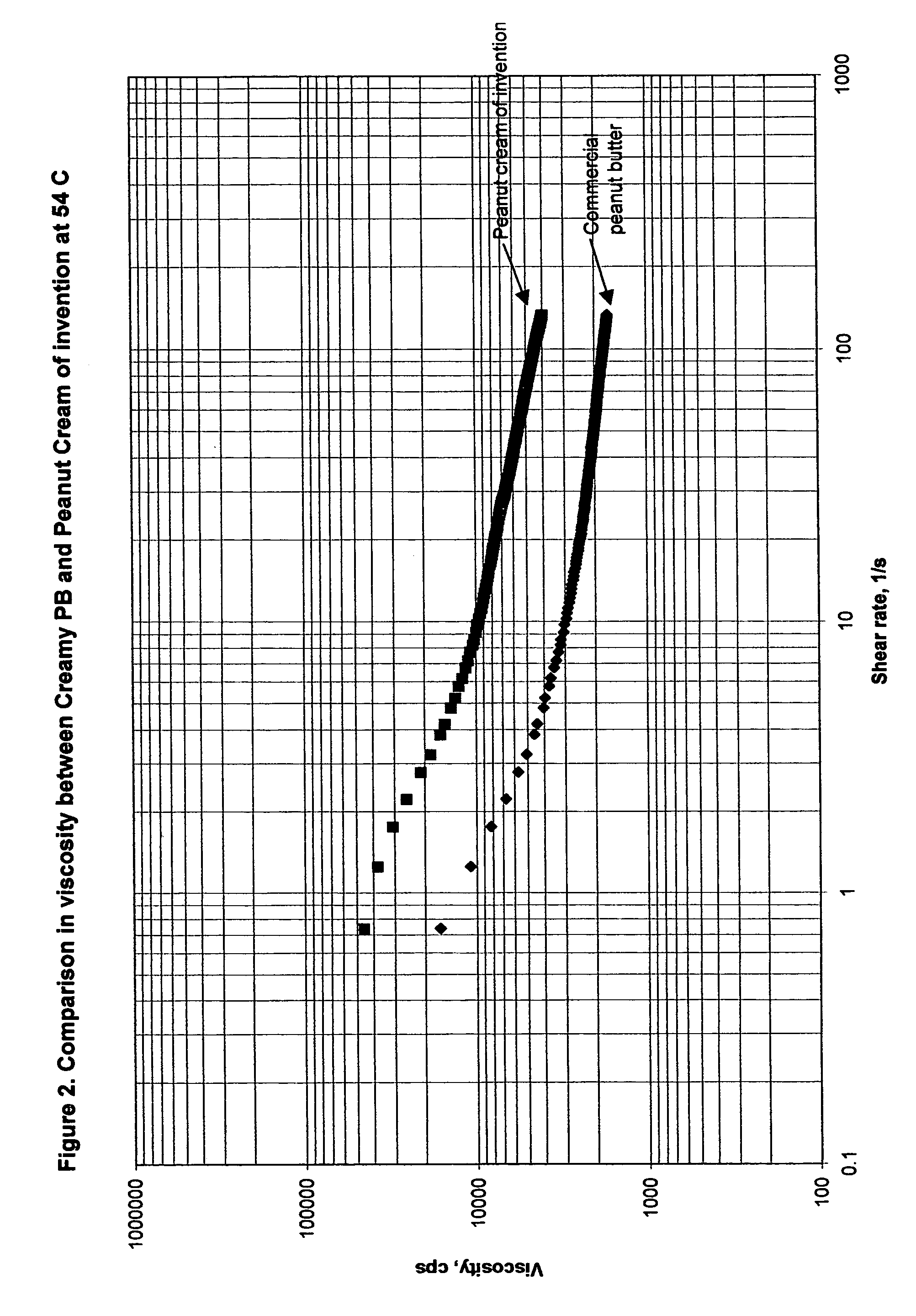Nut creme
a technology of nut creme and creme, which is applied in the field of nut creme, can solve the problems of difficult to achieve and maintain creamy texture in peanut butter and peanut butter-type spreads, many bars lack organoleptic properties, and achieve the effect of convenient processing and physical stability, and desirable creamy textur
- Summary
- Abstract
- Description
- Claims
- Application Information
AI Technical Summary
Benefits of technology
Problems solved by technology
Method used
Image
Examples
example 1
Prophetic
1) Binder Syrup Preparation
[0141] Liquid ingredients, including high maltose corn syrup and high fructose corn syrup, lecithin, and canola oil are combined with the dry ingredients, sugar, maltodextrin, fructose, and salt. The slurry is heated to 180° F. to 200° F. to dissolve all dry ingredients. The slurry is then cooled and held at 120° to 130° F. After slurry has cooled, liquid peanut flavor, Vitamin E and optionally caramel color, are added to the slurry.
2) Peanut Butter Layer Preparation
[0142] Creamy peanut butter is heated to 165-180° F. to enable blending of emulsifier and partially defatted peanut flour. The emulsifier is a hydrogenated mono- and di-glyceride having an IV of 3 sold under the designation BFP74K by American Ingredients Company of Kansas City, Mo. The mixture is heated to 165-180° F. to fully melt all of the fat in the system (including the emulsifier). The mixture is cooled / maintained at 145-155° F., at which time, peanut flavor and vitamin E m...
example 2 (
prophetic)
[0153] Viscosities for molten peanut butter are measured using the following procedure. Experiments are conducted on Haake Rheometer using Model Rotovisco RV20. Measurements are taken on a set of concentric cylinders with an inner cylinder diameter of 2.02 cm and a length of 1.96 cm at 1 mm. annual gap.
[0154] Samples are pre-heated to 80 C for ten minutes to remove residual crystals prior to cooling down to 71, 54, and 32° C. respectively.
[0155] Values in viscosity vs shear rate are determined by increasing the shear rate1 from 0 to 134 s−1 in about 9 minutes. Results for a commercially available creamy butter and a peanut cream according to the invention are shown in FIGS. 1-3. Viscosity data can be regressed with a rheological model: Casson Model; τ0.5=τ00.5+η0.5*γ0.5 where τ is shear stress, τ0 is the Casson Yield Stress, η Is Casson Viscosity, and γ is the shear rate.
1 Shear rate is defined as the relative velocity between cylinders divided by the annual gap
example 3
Prophetic
[0156] Yield stress of products at room temperature is determined using a vane on a Haake Rheometer. As the yield stress is exceeded, flow commences. Below the yield stress, the product deforms. A shear stress growth curve as shown in FIG. 4 following a step rate of rotation at 0.05 rpm is provided for a well-know commercial brand of creamy peanut butter. The yield stress is calculated using the maximum torque value and geometry of the vane.
[0157] Apparent viscosity vs shear rate is determined for using the squeezing-flow method. Apparent yield stress is determined by multiplying the viscosity and its corresponding shear rate. The apparent yield stress is 20,000 dynes / cm2 for the well-known commercial peanut butter brand and 80,000 dynes / cm2 for a product according to the invention. In addition, the viscosity of the product according to the invention is nearly 1.75 times that of the well-known commercial peanut butter brand.
[0158] A comparison of the crystallization and ...
PUM
 Login to View More
Login to View More Abstract
Description
Claims
Application Information
 Login to View More
Login to View More - R&D
- Intellectual Property
- Life Sciences
- Materials
- Tech Scout
- Unparalleled Data Quality
- Higher Quality Content
- 60% Fewer Hallucinations
Browse by: Latest US Patents, China's latest patents, Technical Efficacy Thesaurus, Application Domain, Technology Topic, Popular Technical Reports.
© 2025 PatSnap. All rights reserved.Legal|Privacy policy|Modern Slavery Act Transparency Statement|Sitemap|About US| Contact US: help@patsnap.com



